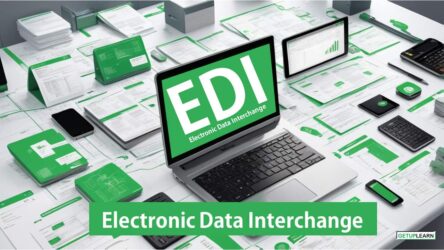Table of Contents
What is Convergence in E-Commerce?
Convergence is the welding of consumer electronics, television, publishing, telecommunication and computer for the purpose of facilities new forms of information based commerce. Convergence is the concept of polling together all materials and resources at one place for easy and guide distribution.
Amalgamation, absorption and merge are taking place in the electronic markets. The aim of such convergence is to reduce the risk of uncertainly in the global market. The convergence may be classified as: (1) Multimedia convergence; and (2) Cross media convergence.
Multimedia Convergence
Multimedia Convergence refers to the convergence of text, sound, data, image, graphics and video into digital content. The effects of convergence are already being felt. Many companies are pooling their resources and talents through alliances and mergers with other companies to make the electronic marketplace a reality.
Part of their motivation may include reducing their risk in light of the uncertainty about what from this eventual global marketplace and e-commerce application will take.
The term E-commerce has become irrevocably linked with the idea of convergence of industries centered on information that until today has been isolated in content, storage, networks, business applications and consumer devices.
Convergences, telecommunications and computers for the purpose of facilitating new forms of information based commerce. The public can be for-given for finding the concept perplexing, since the popular press uses the terms multimedia and cross-media interchangeably.
Multimedia convergence applies to the conversion of text, voice, data, image, graphics and full-motion video into digital content. Cross-media convergence refers to the integration of various industries of entertainment, publication and communication media based on multimedia content.
Convergence in E-Commerce
These two types of convergence are often closely related. For instance, in a new era of interactive TV, the lines between advertisement, education and services often become blurred. While watching an Olympic soccer match between Nigeria and Ireland, you may develop an urge to know more about Nigeria.
Instead of running to the local bookstore and purchasing a book, you can link to an on-line database and search while not missing any part of the match. The information in these on-line databases is not limited to text but also provide photographs and digital videos (multimedia).
In short, convergence requires removing the barriers between the telecommunications, broadcasting, computing, movie, electronic games and publishing industries to facilitate interoperability. Driving the phenomenon of convergence are some simple technological advances:
Convergence of Content
It translates all types of information content books, business documents, videos, movies and music into digital information. Once concerted into digital form, that information can easily be processes, searched, sorted, enhanced, converted, compressed, encrypted, replicated transmitted and so on, in ways that are conveniently matched to today’s information processing systems.
Convergence of Transmission
Compresses and digitized information so it can travel through existing phone and cable wiring. New switching techniques and other technological breakthroughs enable all types of information to travel to the home. Here we see a convergence of communication, equipment that provides the “pipelines” to transmit voice, data, image and video all without rewiring the neighborhood.
Convergence of Information
It accesses devices has the sophistication to function as both computers and televisions. Other examples are the telephones with internal fax machine, modem and video monitor, capable of receiving fax, e-mail and video.
Convergence is also being driven by of certain market conditions including the following:
The widespread availability of increasingly low cost, high performance enabling component technologies, including semiconductors, storage and display devices, communications systems and operating systems, among others.
Entrepreneurs who are feeding on anticipated end user demand for new applications-both products and services that rely on the aforementioned enabling technologies.
Aggressive regulatory actions that are introducing competition in monopoly markets local and long distance communications, telecommunication and cable equipment and right-of-way to customer’s curb-and that serve to facilitate the rapid deployment of these new applications.

